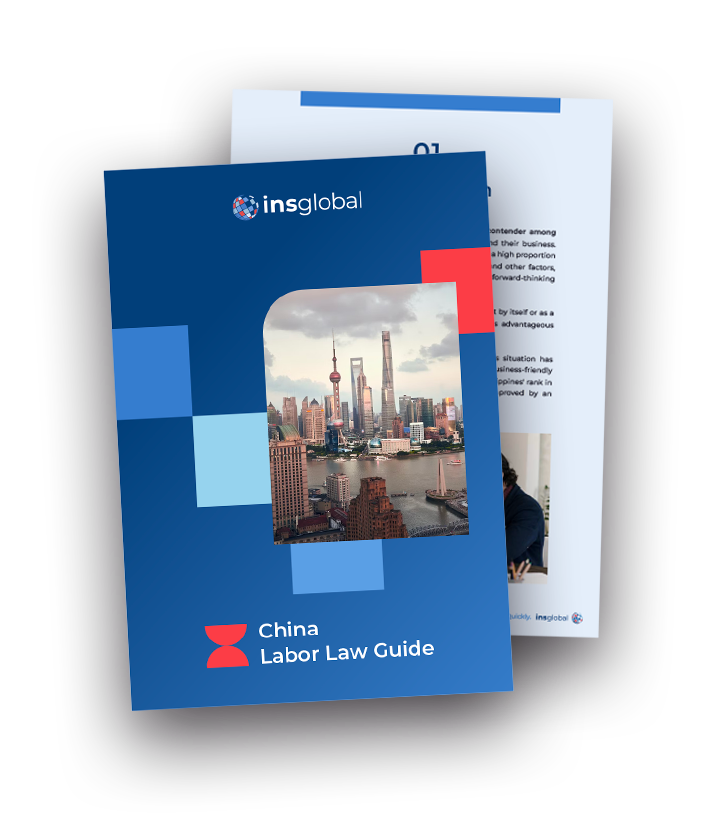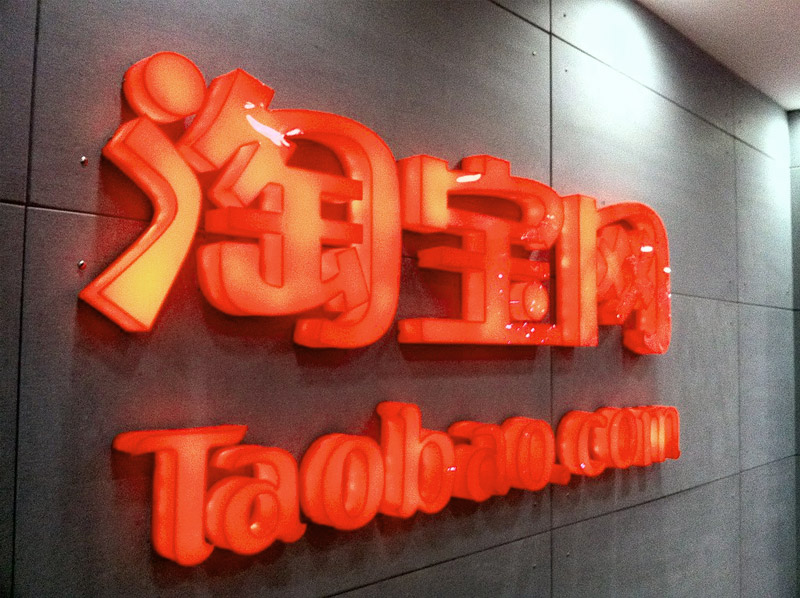E-commerce in China has seen a meteoric rise in the past few years. It is soon expected to make up most of the retail sales in the country in the years to come. Experts predict that around 52.1% of retail revenues will come from online transactions – a number significantly higher than the 44.8% increase from the previous year. This news is major mainly because, for the first time in the economic history of the world, a majority of sales will come from online transactions.

Tired of scrolling? Download a PDF version for easier offline reading and sharing with coworkers
In a hurry? Save this article as a PDF
Tired of scrolling? Download a PDF version for easier offline reading and sharing with coworkers.
Fill up the form below 👇🏼
The Building Blocks of the E-commerce Revolution
The rise of e-commerce in China did not happen overnight. It was the culmination of years of technological advancements, marketing strategies, and environmental factors that transformed the country into an e-commerce powerhouse.
A decade ago, the share of e-commerce in total retail sales was only around 5%. But in 2018, retail sales in China, done through online transactions, soared to about 29%. The year after seemed to reach a tipping point as consumers showed increased enthusiasm for purchasing goods on e-commerce platforms. In 2019, more than a billion people bought items online, which translated to more than $1 trillion turnover value in e-commerce sales.
China has the largest e-commerce market, with hundreds of millions of people shopping online annually. Digital shoppers are often in the age bracket of between 18 and 44 years old, with most of them buying items in the apparel, accessories, and toy categories. The young, tech-savvy generation makes up the majority of the purchasing power of the country. As a result, it is easier for online platforms to penetrate the market and increase market share.
Check Our China Labor Law Guide
Learn how the Chinese law is applied in all aspects and situations, from an employer and employee perspective

Factors Influencing the Boom
Several factors have come into play that led to the boom of e-commerce in China. Some of the more important factors include:

1. E-commerce Platforms
The demand and the explosive growth of online transactions can be traced back to the emergence of e-commerce platforms, pioneered by Alibaba. These revolutionary platforms, like Alibaba, easily grabbed the attention of consumers as it provides convenient, reliable, and easy access to almost any product imaginable with just a few clicks. Additionally, the fast delivery service through route optimization platforms further encouraged more users to conduct more transactions on the platform.
Emulating the success of Alibaba, another competitor, JD.com, rose to the top of the ranks by providing another easy-access option to consumers. Other platforms that offer similar services include Pinduoduo, Suning Global, and Little Red Book.

2. Digital Payment
While digital payment is still in pilot mode in many western countries, over the past few years it has been a popular means of performing transactions in China. The accessibility and reliability of Alibaba’s Alipay and Tencent’s WeChat Pay has made it easy for customers to make payments online. The immediate adoption of these online payment systems by both online and brick-and-mortar shops helped with the familiarization of people with these kinds of payment options. This gave consumers the ability to readily make payments whenever and wherever they needed to.
Meanwhile, the younger generation of consumers is more comfortable with instant messaging and application purchases, which are done mostly via Tencent’s WeChat app. Because of this trend, instant messaging and other applications integrated mobile payment systems for convenient and faster transactions.

3. Low-cost Delivery
One of the main factors that has played an important role in the increase of e-commerce, is the logistics channels within China. With deliveries taking 1 – 3 days to almost anywhere in the country, this was one of the biggest factors that drove the popularity of e-commerce platforms. Even though there are new challenges such as rising labor prices, travel restrictions, and safety regulations, the convenience of being able to receive orders in just a few days remains to be a huge advantage to customers.
Alibaba and JD.com provide low-cost delivery fees that are hard to resist for consumers. Even first-time buyers on the platforms will have little hesitation to buy online, since the cost of trying it out is very cheap and low risk.

4. Convenient Access
According to Statista, as of 2020 there were more than 920 million smartphone users in China. This means that the majority of the world’s largest population has access to a smartphone, which makes e-commerce platforms readily accessible. Previously, online shopping required computer access, credit cards and much more. Today, mobile devices can connect to the internet anytime, anywhere, giving people more freedom with their purchases.

5. Social Commerce
Social commerce is the practice of using networking sites and social media platforms to promote and sell goods and services. The success of the method is measured by how much attention customers have put into the posting through shares, likes, and comments.
In China, social commerce has been a long-time practice among businesses, thanks to the widespread use of online channels and mobile devices. While the rest of the world is just starting to pick up the strategic importance of social commerce, Chinese retailers and consumers have long been familiar with its advantages.

6. KOLs and Influencers
Chinese consumers spend more time in digital content than any other market in the world. Due to this, they are heavily influenced by KOL or Key Opinion Leader (more commonly known as influencers in other parts of the world) marketing conducted on social media platforms.
The secret to the success of influencers and KOLs is authenticity. By providing trustworthy content that reflects both expert and personal assessment on products, consumers build more confidence in purchasing the advertised goods.
Furthermore, the concept of Guanxi, which is a relationship founded in reciprocity, adds to the increasing sales made through online channels. Followers of KOLs and influencers appreciate the valuable content provided to them. In return, they show support to these figures by purchasing the products they advertise.

7. Live Video Selling
In line with the newly emerged KOL culture, live streaming has becoming a completely new facet to marketing in China. Live streaming refers to live videos that demonstrate in real-time how a product works, in order to help build trust in the item being showcased.
Chinese buyers are avid fans of live-streaming sales as well as instant messaging purchases. Around 20% of online shoppers buy directly from live video sales. Currently, Douyin, BiliBili, and Kuaishou are the hottest platforms for hosting live commerce videos.

8. The COVID-19 Pandemic
The coronavirus pandemic also played a huge factor in propelling the popularity of e-commerce transactions. China’s fast suppression of the threat of the virus enabled them to normalize economic functions for several months over the course of 2020. Online shopping has seen at least a 50% increase in consumer activity.
Chinese consumers are avid cross-border buyers of consumable and luxury products. Around 68% of shoppers see foreign goods as having better quality than local goods, especially when it comes to beauty and luxury products. This is proven by the 16.7% growth in cross-border purchases in 2019 alone.
Reduced international travel has increased the spending power of wealthy citizens, leading them to spend more on online luxury purchases. According to a report made by Bain & Company, online penetration for luxury goods jumped from 13% in 2019 to 23% in 2020.
While the acceleration in e-commerce appreciation happened even before the pandemic, the shift to online channels saw further growth as brick-and-mortar shopping became more restricted. Because of lockdowns and travel restrictions, online shopping increased exponentially as customers adapted to the new trend in purchasing both necessities and other products.
Ecommerce Platforms
E-commerce channels in China have also drastically increased in size and activity. Big corporations and start-up companies alike have launched several platforms and product offerings to cater to their customers. Here are some of the more popular platforms:

Owned by the Alibaba Group, it caters to C2C transactions similar to how eBay works in other countries. More than 10 million individuals and SMEs use the platform to sell their goods throughout China. With over a billion products listed on the channel and a daily active user count exceeding 300 million, Taobao is definitely one of the biggest e-commerce platforms in the country.

- WeChat Mini Programs
Popular social app WeChat has upgraded its interface to encourage third-party e-commerce platforms to use the chat application, giving businesses access to the large WeChat user base. Both consumers and merchants embraced this advancement, which resulted in more e-commerce transactions done through the program.

It is the largest direct online sales platform in China, where products come directly from manufacturer warehouses. Through its strong logistics network, which enables next-day or same-day delivery, JD has become one of the most trustworthy channels to buy quality products. It also specializes in selling appliances and consumer electronics in the country.
This company enjoys a substantial chunk of the e-commerce sales pie, after from Alibaba and JD. It is an e-commerce platform that taps into social networking to digitalize group-buying, or what the company calls the “team purchase” model. The platform allows users to invite contacts and form a shopping group that can purchase goods in large quantities at prices lower than those in retail stores.
Pinduoduo utilizes the C2B (customer-to-business) framework to eliminate distributors and middlemen and direct consumers to manufacturers. This method greatly reduces the price tag on goods while increasing the profit for manufacturers.
While Alibaba and JD targeted urban customers with easy access to deliveries, Pinduoduo unlocked the potential of the less urban and rural markets which have previously not been fully realized. Groups of buyers, especially those in the countryside, can now order large quantities of products that a large portion of the community can benefit from, while saving on delivery costs and buying the items at a discount.

It is the biggest B2C online retailer in China that allows both foreign and local names to sell their products to Chinese citizens. A wide range of products can be found on the platform, ranging from shoes and clothes to food and luxury items – almost everything can be searched on the site.
One of the biggest advantages of TMall is their simplified payment process, wherein buyers are not forced to use their credit cards by offering alternative payment options.

When it comes to cross-border e-commerce, Suning is like Alibaba with its broad network of sellers and reliable logistics system. It has both brick-and-mortar shops and an e-commerce platform with an expanded market reach and multiple payment options.
Other Platforms
The following online platforms have a smaller following mainly due to their focus on niche markets. Nonetheless, they are worth mentioning for their continuous contribution to the popularity of e-commerce in the country and their growth among their respective markets.
SMEs that want to enter the Chinese market can post their deals on this platform. It has one of the largest communities online, focused on foreign luxury brands. For beauty, wellness, and lifestyle products, the Little Red Book platform is the trusted source for many customers, especially women.
It is the leading portal for baby products sold in the country. It targets parents who have been influenced by Western culture in raising children. Aside from milk powder, the website features dresses, toys, and other baby products that mainly come from international producers.
An online shopping portal that sells cosmetic and luxury products. It is trusted by customers because it sources its products only from authentic manufacturers.
- Kaola
It is another cross-border e-commerce platform that specializes in selling beauty, clothing, and maternity goods. The products sold on the website are all directly sourced from overseas suppliers to ensure authenticity.
Continued Success of E-commerce in China
Seeing China’s success in e-commerce engagement, it would not be unusual for the rest of the world to follow suit by encouraging more online transactions to boost retail sales. Despite there being a number of challenges, e-commerce adoption is gaining momentum and is seen as the future of transacting, regardless of existing public health concerns. It is believed that the popularity of e-commerce will remain high in the following decades until a more convenient or revolutionary way of doing business is introduced to the Chinese market.
INS Global in China
INS Global is one of the world’s leading HR solutions firms and the leading PEO provider in China. With more than 15 years’ experience in the market, we pride ourselves on providing only the highest quality service to our clients. We are able to help clients hire staff with our Global PEO solution, recruit top talent or invoice businesses in China.

SHARE